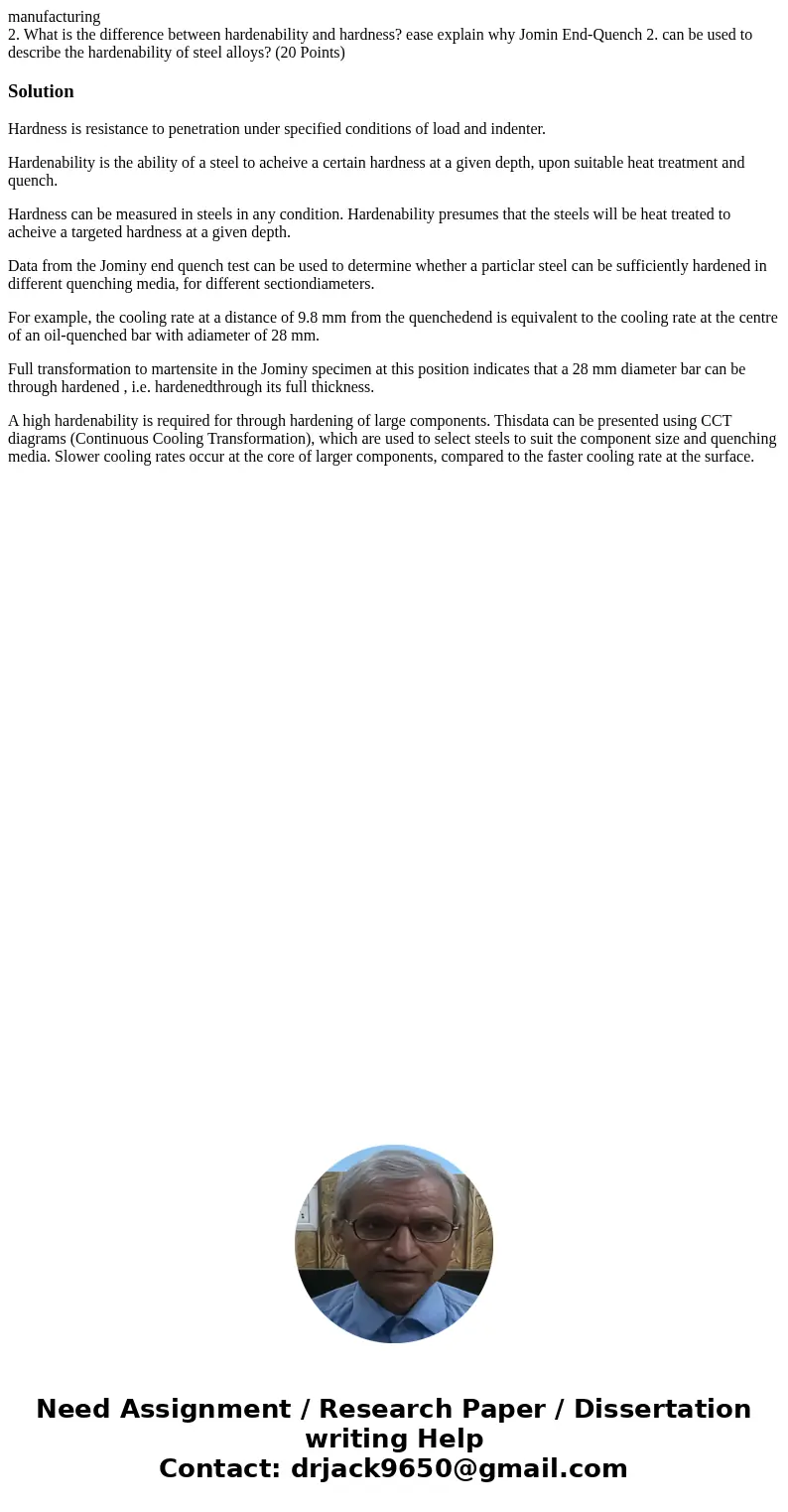manufacturing 2 What is the difference between hardenability
Solution
Hardness is resistance to penetration under specified conditions of load and indenter.
Hardenability is the ability of a steel to acheive a certain hardness at a given depth, upon suitable heat treatment and quench.
Hardness can be measured in steels in any condition. Hardenability presumes that the steels will be heat treated to acheive a targeted hardness at a given depth.
Data from the Jominy end quench test can be used to determine whether a particlar steel can be sufficiently hardened in different quenching media, for different sectiondiameters.
For example, the cooling rate at a distance of 9.8 mm from the quenchedend is equivalent to the cooling rate at the centre of an oil-quenched bar with adiameter of 28 mm.
Full transformation to martensite in the Jominy specimen at this position indicates that a 28 mm diameter bar can be through hardened , i.e. hardenedthrough its full thickness.
A high hardenability is required for through hardening of large components. Thisdata can be presented using CCT diagrams (Continuous Cooling Transformation), which are used to select steels to suit the component size and quenching media. Slower cooling rates occur at the core of larger components, compared to the faster cooling rate at the surface.

 Homework Sourse
Homework Sourse